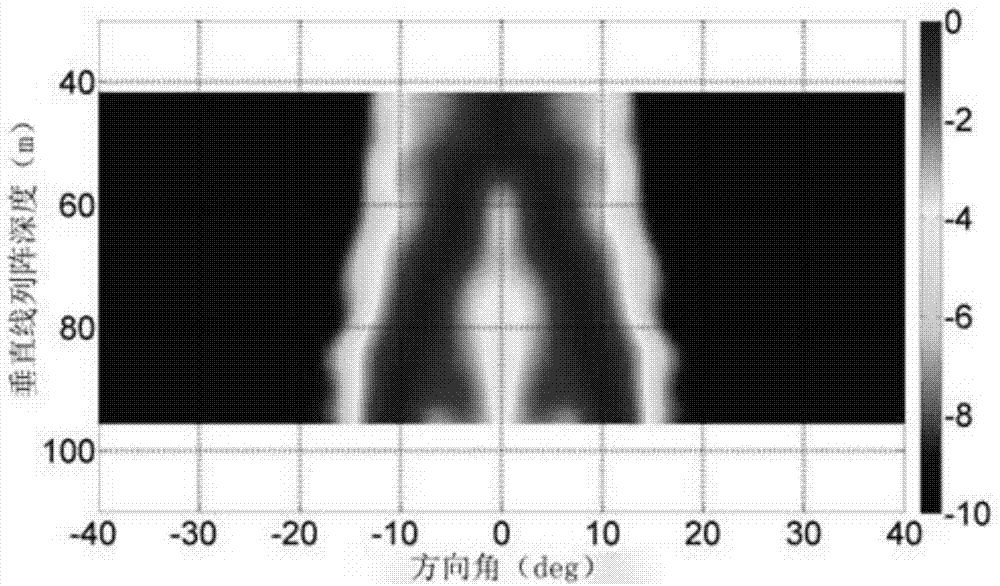Method for increasing passive sonar operating distance by means of shallow sound field airspace characteristics
A technology of working distance and passive sound, which is applied in ocean engineering, sonar, and underwater acoustic engineering
- Summary
- Abstract
- Description
- Claims
- Application Information
AI Technical Summary
Problems solved by technology
Method used
Image
Examples
Embodiment
[0060] Such as figure 1 As shown, the signal data analysis
[0061] The center frequency of the sound source emission signal is 335Hz, the data sampling rate is 1kHz, the -3dB bandwidth is approximately 30Hz, and a total of about 10 minutes of data is obtained. It is worth noting that the experimental data contains both signal and noise. The array element input signal-to-noise ratio is about 10dB. Since the narrowband problem is mainly concerned, the narrowband time-domain beamforming method can be used to analyze the receiving directivity response of the vertical line array to the long-distance sound source signal. Filter the received experimental data through a FIR bandpass filter with a passband of 333-337Hz to make it a narrowband signal. The signal covariance matrix is estimated by the average of 60s experimental data.
[0062] Such as figure 2 As shown in , the receiving directivity response of the sub-vertical receiving array to the long-distance sound source si...
PUM
 Login to View More
Login to View More Abstract
Description
Claims
Application Information
 Login to View More
Login to View More - R&D
- Intellectual Property
- Life Sciences
- Materials
- Tech Scout
- Unparalleled Data Quality
- Higher Quality Content
- 60% Fewer Hallucinations
Browse by: Latest US Patents, China's latest patents, Technical Efficacy Thesaurus, Application Domain, Technology Topic, Popular Technical Reports.
© 2025 PatSnap. All rights reserved.Legal|Privacy policy|Modern Slavery Act Transparency Statement|Sitemap|About US| Contact US: help@patsnap.com



